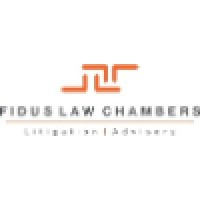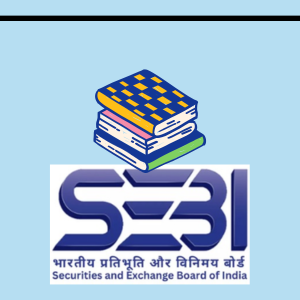
In India, evidence law with respect to both civil and criminal cases has been covered extensively and comprehensively under the Indian Evidence Act, 1872. Other than statutory law, precedents by apex courts such as High Courts in the respective states as well as the Supreme Court of India have played an active role in shaping evidence law in India.
In this article, Team YLCC brings you the Top 10 Landmark Evidence Law cases in India. Read on!
1. OOP KUMAR V. MOHAN THEDANI, AIR 2003 SC 2418
COURT: The Supreme Court of India
FACTS: This case exemplifies how a legitimate cause can be undermined by the use of questionable arguments that result in a party being denied compensation that is rightfully his. It is simply another example of the countless times that the administration of justice has been thrown off track by distractions based on sham evidence and questionable legal reasoning. The apex court provided the following interpretation of Sections 91 and 92 of the Indian Evidence Act, 1872 in the case Roop Kumar v. Mohan Thedani (2003).
JUDGMENT: According to the Supreme Court, Section 91 prohibits establishing the contents of written documents other than by writing. This includes proof of the conditions of contracts, grants, and other dispositions of property. As a matter of fact, Section 91 proclaims the idea of substantive law, which gives written documents much more weight than testimony given orally. Consequently, it also works with the best evidence rule. Given the restrictions imposed by Section 91, it is important to highlight that if a third party seeks to show the existence of a contract between two parties, and the existence of such a contract has been established, then the third party may do so only by submitting such a contract in writing. While both Section 91 and 92 ban the use of oral evidence to identify a party for the purpose of changing the terms of a contract, the later section sets a constraint on the use of such evidence that is not present in the earlier section.
2. BODHA AND ORS V. STATE OF JAMMU AND KASHMIR, 2022 SC
COURT: High Court of Jammu and Kashmir
FACTS: The question that needed to be answered in this case was whether or not the finding of an assault weapon on the basis of information provided by the accused during detention was sufficient to establish the accused’s guilt.
JUDGMENT: The Honourable Court went over a number of the most important requirements that need to be met before a conviction may be handed down simply on the basis of circumstantial evidence. They are as follows:
- It is necessary to construct unchangeable circumstances in order for guilt to be inferred from a situation. To put it another way, it ought to be proven and impenetrable.
- There should be no room for any alternative interpretation, and the circumstances should continue to maintain their moral certainty.
- The only hypothesis that should be considered is the one that has to be proven. All others should be disregarded.
- It is essential that the circumstantial evidence be of a conclusive character in order to establish a connection between the criminal and the commission of the crime.
3. ANVAR PV V. PK BASHEER & ORS (2014) 10 SCC 473
COURT: Supreme Court of India
FACTS: This case involves the constituency election for the Eranad Legislative Assembly. This election was won by the candidate backed by the United Democratic Front. The appellant, who was an independent candidate and was backed by the Left, received the second-highest number of votes. However, the appellant then filed an election petition to claim that he was the lawfully elected candidate for the Eranad Legislative Assembly and to invalidate the election of the respondent. This election petition sought this declaration under Representation of the People Act sections 100(1)(b), 123(2)(ii), and 123(4). This election petition, however, was denied by the High Court of Kerala since the charges could not be proven beyond a reasonable doubt. This appeal was thus filed with the Supreme Court of India.
JUDGEMENT: In this case, it was determined that the respondent’s election could not be overturned since the court’s appeal was without substance. The lawsuit was rejected on the grounds that compliance with section 65B standards is necessary for the admission of electronic evidence. The electronic evidence presented by the appellant does not meet these criteria.
4. DR. SUNIL CLIFFORD DANIEL V. THE STATE OF PUNJAB (2012), 11 SCC 205
COURT: Supreme Court of India
FACTS: In the case of Dr. Sunil Clifford Daniel v. The State of Punjab (2012), the Supreme Court of India rendered a decision about the inter-relationship that exists between Section 162 (1) of the Code of Criminal Procedure, 1973 and Section 27 of the Indian Evidence Act, 1872.
JUDGMENT: The exact phrasing of Section 162(1), which states, “a comment given by any individual to a law enforcement officer in the process of an investigation done, if put to writing, be not signed by the individual who made it,” makes it abundantly obvious that the law mandates that a statement made before the investigating officer not be signed by the witness delivering it. Simply said, the witness’s testimony before the relevant authorities will not bind him in any way. Section 162(1) of the Cr.P.C., however, will not apply to statements made in accordance with Section 27 of the Evidence Act. While making this observation, the Supreme Court also made clear that investigators are under no legal requirement to get an accused person’s initials on any remarks that are ascribed to him in a seizure report prepared in accordance with Section 27 of the Act of 1872. The acquisition of such initials, however, will not be viewed as illegal.
5. KALYAN KUMAR GOGOI V. ASHUTOSH AGNIHOTRI AND ANR., 2007 (4) GLT 374.
COURT: Guwahati High Court
FACTS: Hearsay is knowledge obtained from a third party about a state of affairs or an event with which the first party has no firsthand experience. Hearsay refers to a remark made by a witness that is used as evidence in a court of law. Hearsay evidence is a declaration made in court by someone who did not directly see the event in question but who learned about it second-hand from other witnesses. Hearsay evidence is not admissible in court since the statements of the witnesses are not considered reliable. The Supreme Court has explained why hearsay is not admissible in the case of Kalyan Kumar Gogoi v. Ashutosh Agnihotri.
JUDGEMENT: Hearsay testimony is not allowed in a court of law because it lacks legal certainty and is not reliable enough to be used as evidence. As part of its remark, the Court of Law outlined the circumstances in which hearsay testimony does not hold much weight in court, including the following-
- The purpose of evidence legislation, which mandates that all evidence presented in court be provided with responsibility and knowledge on the side of the person making the submission, is rendered moot when hearsay evidence is admissible.
- In addition, if something else were to occur, the defendant may be accused of perjury in court. The court and the opposing party waste time with hearsay evidence because it dilutes the truth that must be delivered. Hearsay testimony is unfair to the individual against whom it is provided since it can lead to fraud, deceit, or undue influence if allowed in court.
6. MANGALA WAMAN KARANDIKAR (D) TR AND LRS. VS. PRAKASH DAMODAR RANADE, AIR 2021 SC 2272, (2021) 6 SCC 139
COURT: Supreme Court of India
FACTS: In the following decision, the Supreme Court ruled that it is unnecessary to investigate the extrinsic evidence where the conditions of the contract are apparent and straightforward, since doing so would simply vitiate the legal interpretation. When the petitioner’s spouse passed away, the company he had been operating under the name “Karandikar Siblings” was continued by the petitioner. As soon as she realised she couldn’t keep up with the company on her own, she handed over the reins to the responder. The arrangement was found to be for the purpose of producing commercial sales, and the trial court ruled in favour of the petitioner.
JUDGEMENT: The Supreme Court agreed with the appellant that it was clear from reading the contract that the parties intended to transfer the business from the appellant to the respondent, and that the contract did not contain any language that could be interpreted as rent or permission for the respondent to lead the business. In a similar vein, the Supreme Court decided that it was unnecessary to rely on clause 6 to section 92 and Section 95 since the significance of the document was obvious. In this way, the panel led by India’s Chief Justice, Justice NV Ramana, concluded that Section 95 merely elaborates on the proviso 6 of Section 92. An additional expansion of the scope of the proviso beyond the principal Section would result from accepting the alternative interpretation as it would produce Section 92 of the Evidence Act. An interpretation as broad as the one adopted by the High Court cannot be consistent with the basic principle of legal interpretation. Evidence of any oral agreement that contradicts, varies from, adds to, or subtracts from the conditions of Section 92 is expressly forbidden. To concur with the power to present evidence to negate or shift such words would amount to agreeing with the learned judges’ expression that the circumstances of the record were actually different from those stated in that, and this gets remarkably near to Section 92 of the Act.
7. RAM JAS V. SURENDRA NATH, AIR 1980 ALL 385
COURT: Allahabad High Court
FACTS: The Indian Evidence Act of 1872 is a descriptive statute that mandates certain procedures be implemented by Indian courts while considering the validity of evidence provided before them. In Ram Jas v. Surendra Nath (1980), it was ruled that the statute of evidence is the legislation that doesn’t impact the fundamental rights of the parties but rather aims towards granting justice to them. This is the essential premise that puts the evidence law in action.
JUDGEMENT: In the 1980 case Ram Jas v. Surendra Nath, the fundamental premise that governs the application of evidence law was stated: “The Law of Evidence is the legislation that does not impair the substantive rights of the parties, but rather seeks to facilitate justice for them.” The Evidence Act establishes rules of evidence for the court’s guidance. It is procedural law that specifies, among other things, how a fact must be established.
8. BHIMSHA SUBANNA PAWAR V. STATE OF MAHARASHTRA, 1996 (1) BOMCR 212
COURT: The Bombay High Court
FACTS: In this case the Bombay High Court considered the conditions in which independent evidence is not available for the Court to proceed with the accused’s conviction.
JUDGEMENT: In this case, the Hon’ble High Court held that, in the absence of independent evidence, the Court must carefully assess the testimony of police witnesses, which, if found to be credible, will serve as the foundation for the accused’s conviction. Thus, if assault weapons were discovered in accordance with the accused’s testimony and there was no indication of enmity between the police inspector and the accused, it would be appropriate and safe to trust the uncorroborated statement of the inspector regarding the recovered weapon.
9. PANDITRAO ARJUN KHOTKAR V. KAILASH KUSHANRAO GORANTYAL AND ORS
COURT: The Bombay High Court
FACTS: The High Court reviewed the Returned Candidate’s four nomination papers. Respondents argued that each set of nomination papers contains significant flaws and that, because all four sets were unlawfully approved by the RO, the election of the Returned Candidate should be null and invalid. The Bombay High Court ordered the Election Commission to release the original video. This electronic document and accompanying credentials are required.
JUDGEMENT: The court made the Information Technology Act of 2000 and the Indian Evidence Act of 1872 work well together. It said that Section 65B of the Evidence Act is a complete code in and of itself, and that the Information Technology Act and the statutory provision of the Evidence Act are legal tools to stop technology from taking over.
10. BHAGWAN SINGH V. THE STATE OF PUNJAB, 1976 AIR 202, 1976 SCR (2) 921
COURT: The High Court of Punjab
FACTS: The appellant is a CID police constable and Jagat Singh (PW-1) is a head constable. The appellant wanted to help the accused in a case obtain an acquittal and get back the seized coins, so he bribed Jagat Singh, who was investigating the case under section 411 of IPC, to swap the seized gold coins with alternative marks. The policeman reported the incident to the DSP, and the raiding party detained the appellant and the other accused in a hotel and retrieved the gold coins. Head constable’s Rs. 1000 was also retrieved. A Special judge and High Court convicted appellant and sentenced him to one year of Rigorous Imprisonment.
JUDGEMENT: The appeal was dismissed. The court noted that allowing the prosecutor to cross-examine his own witness, therefore labelling him a hostile witness, did not destroy his evidence. The evidence remains admissible in the trial, and there is no legal obstacle to rely on his testimony if additional evidence supports it. The High Court’s conviction and sentence were affirmed.
YLCC would like to thank Dibyangana Nag for her valuable insights in this article.






